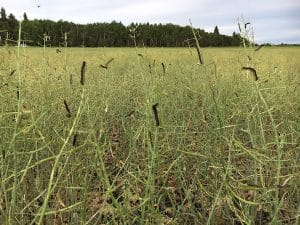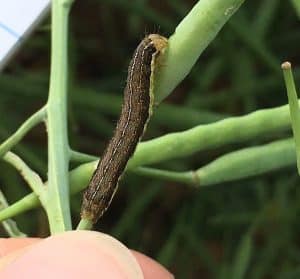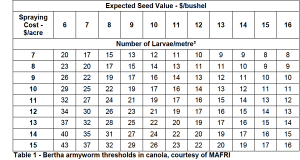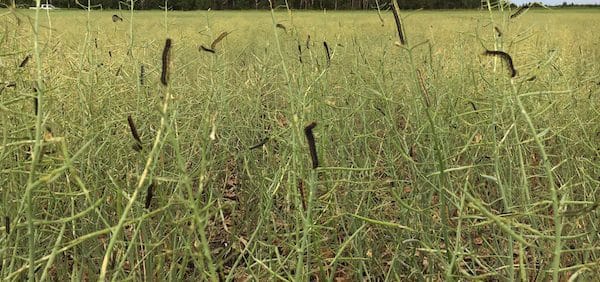A heavily-infested field in western Manitoba (south of Riding Mountain National Park) generated a lot of interest on Twitter in the past week. It prompted a lot of scouting, which is good. But what this one field and the ensuing scouting demonstrated is that bertha armyworm population spikes can be highly localized.


Why so localized? Bertha armyworm moths are very mobile, so they will select ideal locations to lay eggs. This will result in one field over another and even patches as parts of the field may be preferred for egg laying. Noctuid family moths commonly lay eggs in select areas and that is why cutworms often are on patches. Bertha armyworm is in the noctuid family.
As a result – despite good coverage with the bertha armyworm monitoring, which excels at picking up larger outbreaks – small pockets of bertha army worm do pop up occasionally.
While several fields in Manitoba are at thresholds, few fields across the Prairies have reached thresholds. In Alberta, the monitoring showed very low risk throughout the province, with only one trap site at Warner above the first level of warning (300 moths). Despite this, there is a small area of concern south of Stettler.
The risk period is not over. Bertha armyworm populations can escalate fairly quickly and smaller numbers of bertha armyworm can do a lot of damage. So keep scouting.
Scouting tips
—Go out in early morning or late evening when larvae are mostly active.
—Mark out a quarter-metre square (50 cm by 50 cm) and beat the plants growing within that area to dislodge the larvae. Count the larvae that have fallen to the ground and multiply by 4 to get the number per metre square. Larvae will hide under leaf litter and in cracks, so check closely.
—Sample at least 5 locations (10-15 is recommended) a minimum of 50 metres apart. Do not sample headlands and areas within the crop that are not representative of the field. Use the average number of larvae at the sites surveyed to determine if the economic threshold has been exceeded. (See the table below.)
—If counts are close to threshold, keep looking. As Alberta Ag entomologist Scott Meers says, “If the action level is 20 per square metre and you find 17, look more closely to make sure you’re right.”
—Scout each field. Adjacent fields may have very different larval densities, depending on how attractive the crop was when the moths were laying their eggs. Adjacent fields may also have different-sized larvae, depending on when the eggs were laid.
—For best results, apply an insecticide as soon as economic thresholds are reached. A single well-timed application of any registered insecticide is usually effective. Check provincial crop protection guides for registered insecticides and pre-harvest intervals to prevent issues with MRLs (maximum residue limits). Visit spraytoswath.ca to find a pesticide that fits your timeline.
—Apply insecticides early in the morning or late evening when the larvae are actively feeding. Do not apply during warm afternoons.
How does weather impact risk? Drought conditions will mean stressed plants and hot, dry conditions tend to favour bertha armyworm because fungal infection to eggs and worms are reduced. Growers may want to lower thresholds (by how much) in drought conditions. Wet conditions will increase fungal infections to worms and eggs.

Further reading:

